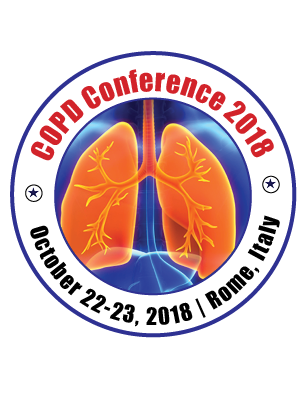
Camilo Corbellini
Casa di Cura Villa Serena Piossasco, Italy
Title: Measurements of diaphragmatic mobility in COPD patients
Biography
Biography: Camilo Corbellini
Abstract
COPD causes airway obstruction that is not fully reversible and causes changes in the rib cage structure. These modifications lead to respiratory muscles functional inefficiency that is strongly correlated to lung function loss. Specifically, the diaphragm undergoes a progressive process of muscle fibers shortening, consequence of lung hyperinflation and dead space increase. This results in a chronic mechanical disadvantage that impairs the diaphragm’s mobility. This impairment may worsen in COPD exacerbations, improving after pulmonary rehabilitation. The diaphragmatic mobility (DM) is mostly assessed with techniques that expose the patient to risks. The ultrasonography in M-mode is easy to use, is safe and measures directly the diaphragmatic dome displacement. The study aimed to determine whether the COPD, according to the subjects’ COPD severity, impairs the DM and to verify DM improvements after an inpatient pulmonary rehabilitation. We performed lung function tests and diaphragmatic M-mode ultrasonography in COPD individuals and healthy subjects. Ultrasonography was performed during rest breathing and deep inspirations. The COPD subjects underwent six-minute walk test and arterial blood gas analysis. After initial screening, 46 COPD patients ended the rehabilitation. The mean characteristics in healthy individuals and COPD subjects: The DM during rest breathing and deep inspirations were correlated to FEV1 decrease (r=0.74; p<0.01 and r=-0.8; p<0.01, respectively). The correlation was also positive between the deep inspiration and the inspiratory capacity (r= 0.64 with p<0.001). After the rehabilitation, the DM increases during deep inspiration from 4.58cm ± 1.83cm to 5.45cm ± 1.56cm (p<0.01). It could be concluded that M-mode ultrasonography showed DM impairment is correlated to lung function loss in COPD subjects. The patients who completed the rehabilitation improved the diaphragmatic mobility verified during deep inspirations.

